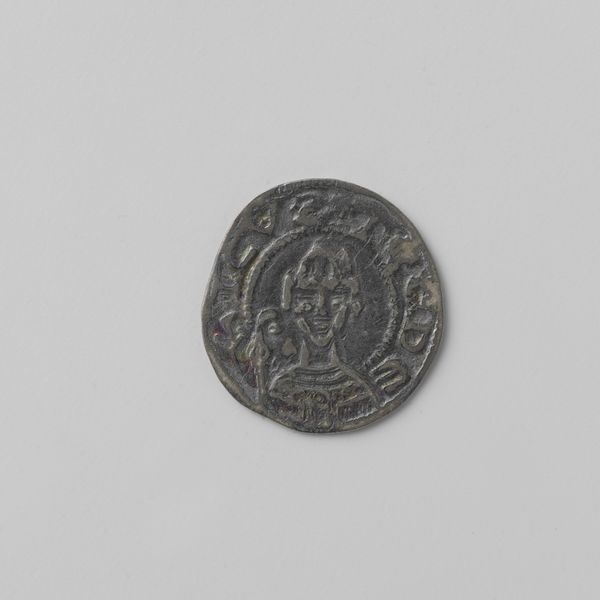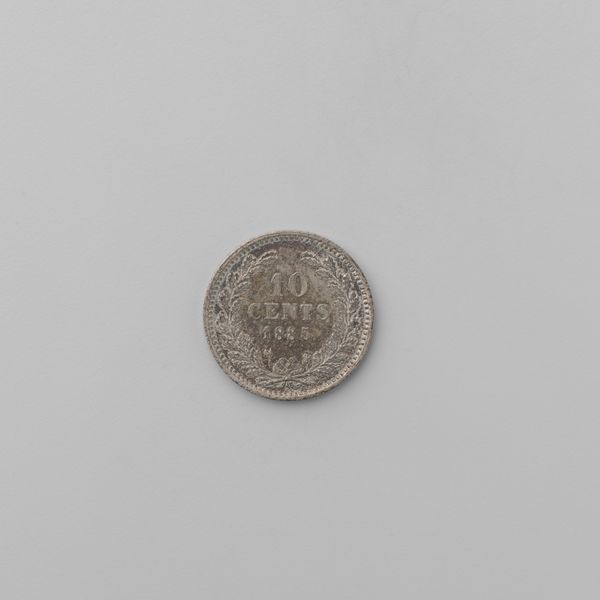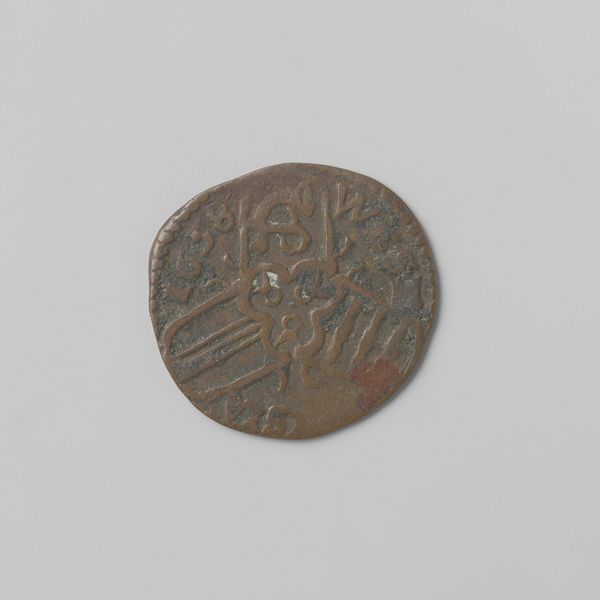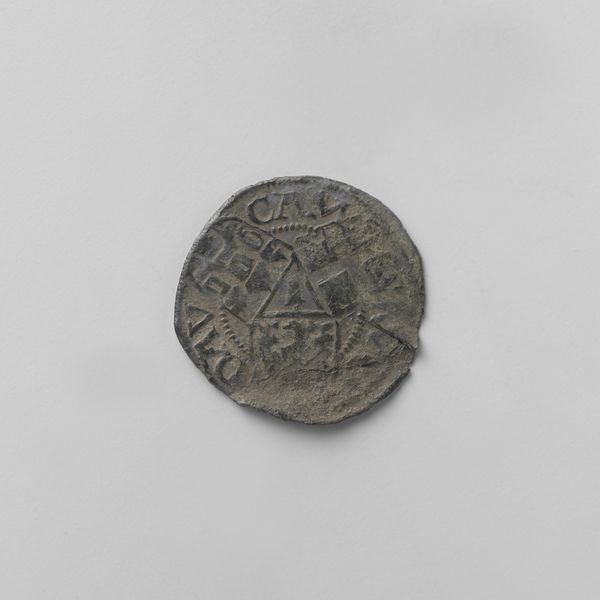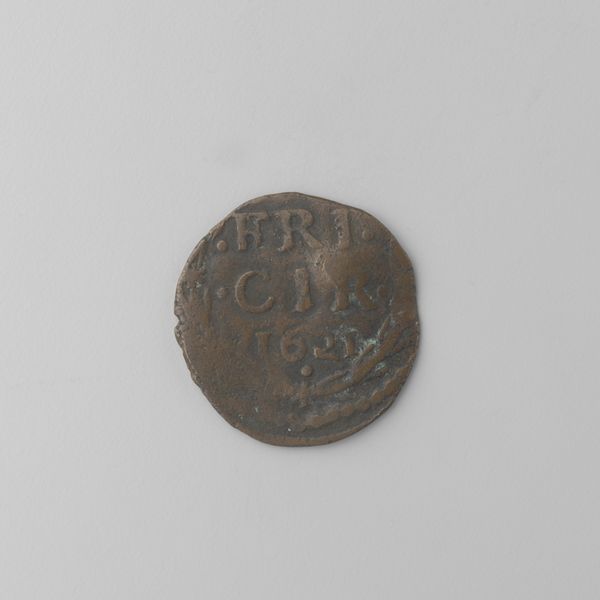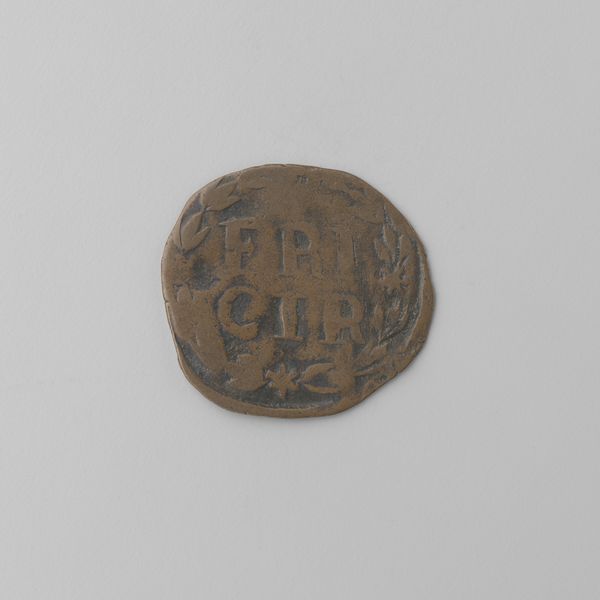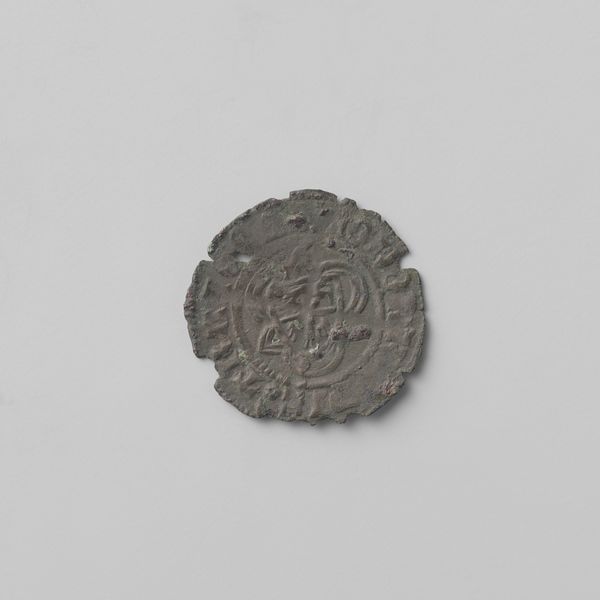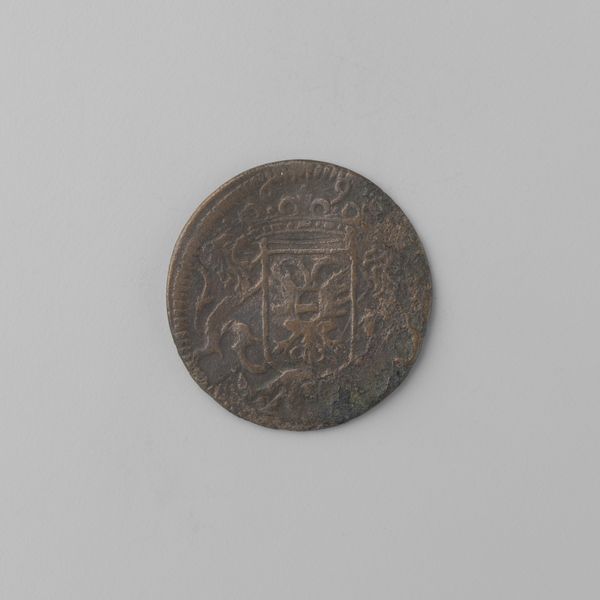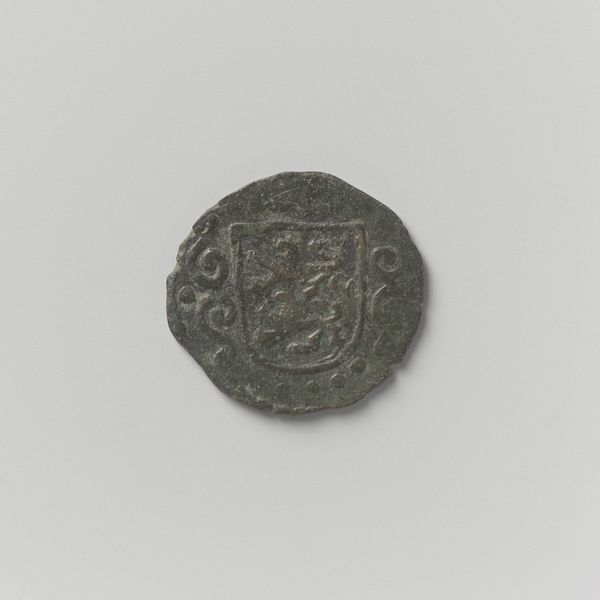
metal, relief, bronze
#
medieval
#
metal
#
relief
#
bronze
#
islamic-art
#
miniature
Dimensions: diameter 2.0 cm, weight 0.78 gr
Copyright: Rijks Museum: Open Domain
Curator: Here we have a medieval coin: a "Reckheimse 1/4 groot van Willem II van Sombreffe", dating from the 15th century. Its worn surface tells tales of a bygone era. Editor: My first impression is its somber presence. Despite its small scale, there is an immense gravitas suggested by the eroded details, an indexical fossil of Late Medieval aristocratic exchange. It feels incredibly tactile. Curator: Indeed. Note the composition, the central cross motif is powerfully framed within the circular form. This design, in subtle relief on the bronze surface, exhibits incredible constraint and balance, especially within such a restricted area. Editor: While you admire its structural elegance, I see the embodiment of feudal power structures in this tiny token. Willem II of Sombreffe, lord of Reckheim, used this as an extension of his authority. I mean, the act of minting currency was more than an economic one – it was performative politics. Curator: Absolutely, the inscription, though faint, reinforces the purpose: a system of order and exchange formalized through aesthetic means. Semiotics and value united into one design. Editor: Don’t you think it’s fascinating how the material itself speaks to issues of agency? Bronze, metal, relief carving – the medium bears traces of the exploited labor that shaped medieval economies and social hierarchies. Its beauty is tainted. Curator: I am interested in the surface design – its circular nature is only "interrupted" by degradation from daily circulation; it's that very degradation which grants the artwork character! Editor: Well, my experience in studying its degraded texture makes me ask whose hands it has passed through; serfs or soldiers who had no say, probably earning near-to-nothing while laboring for him in agricultural exploitation of land and resource accumulation. Curator: So the physical degradation becomes its aesthetic signature to your eye, then? Very interesting how the perspective informs what is seen. Editor: Indeed, its objective artistry cannot be divorced from these grim socioeconomic realities, even as we view it now from the sterile remove of a display.
Comments
No comments
Be the first to comment and join the conversation on the ultimate creative platform.
